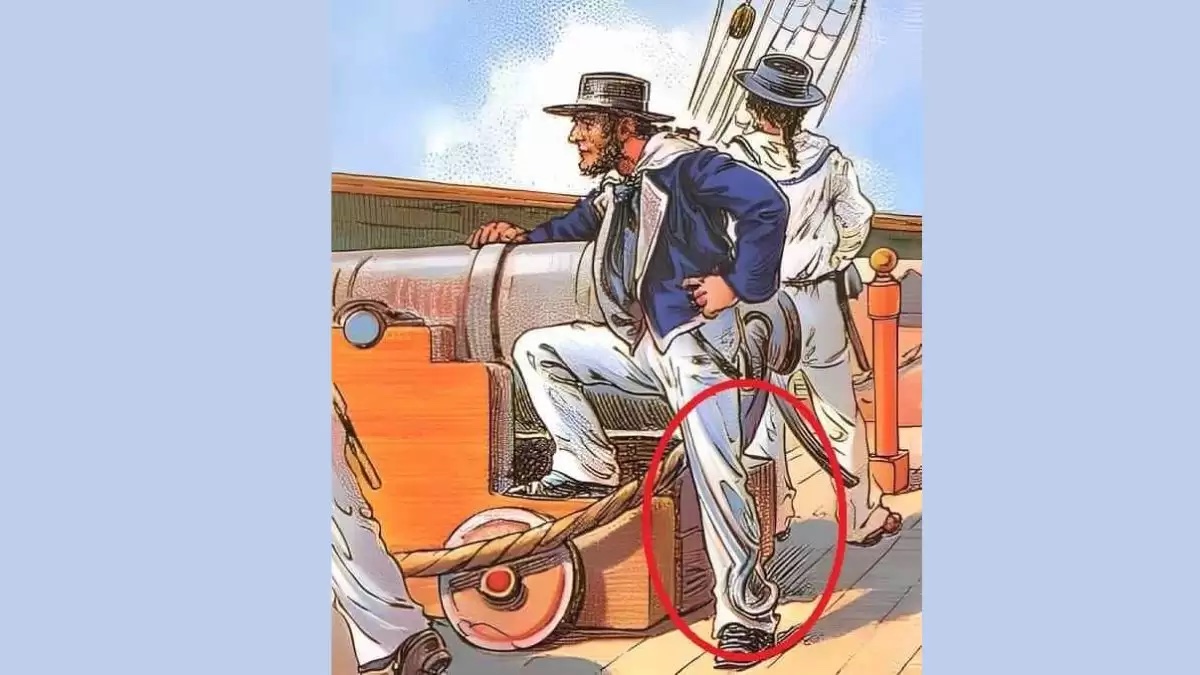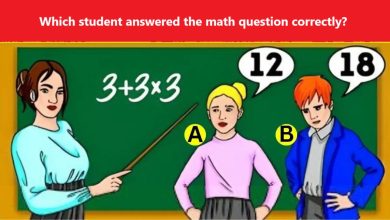Hidden Sailor Optical Illusion: You Have The Eyes Of Sharp If You Can Spot The Sailor’s Lost Sword In The Picture In 12 Seconds!

Hidden Sailor Optical Illusion: Hawk eyes people can find the hidden sailor’s lost sword in this Optical Illusion. Try this Optical Illusion and know your IQ level or Visual level.
Hidden Sailor Optical Illusion
Hidden Sailor Optical Illusion, In the digital age, optical puzzles have become ubiquitous on social media platforms, and people often find themselves puzzled when attempting to solve them. Engaging with optical illusions on a regular basis offers various benefits, including sharpening your focus and enhancing your attention to detail. It also contributes to the development of a more discerning intellect. These optical illusions come in the form of puzzles, artworks, brainteasers, and visual challenges.
What are the Different Types of Optical Illusion?
Geometric Illusions: These illusions involve geometric shapes like squares, rings, and circles, and how they appear to change size or shape depending on their surroundings.
Ambiguous Illusions: These illusions can be interpreted in multiple ways, prompting the brain to choose between different perspectives. For instance, the renowned “duck-rabbit” illusion can be perceived as either a duck or a rabbit.
Motion Illusions: These illusions create the illusion of movement or motion, even when there is none. The “rotating snakes” illusion is a prime example, where stationary images seem to be in motion.
Color Illusions: These illusions play with the way colors are perceived by the eye. An example is the “checker shadow” illusion, where two squares of different shades of gray appear the same due to surrounding shadows.
Tactile Illusions: These illusions involve the sense of touch, as seen in the “rubber hand” illusion, where a person feels as if a rubber hand is their own.
Cognitive Illusions: These illusions pertain to how the brain interprets information, such as the “Stroop effect,” where the brain struggles to process conflicting information, like reading the word “blue” when it’s written in red ink.
Hidden Sailor Optical Illusion, These are just a few examples of the diverse range of optical illusions that exist, each offering a unique insight into perception and cognition.
Try to Find the sailor’s lost sword in this Optical Illusion If You are a Genius
This statement introduces a challenge to the reader. It suggests that finding the sailor’s lost sword in a given image within a 12-second time frame requires exceptional observation skills. The phrase “the eyes of a sharp observer” emphasizes the need for keen eyesight and attention to detail to successfully complete the challenge.
Hidden Sailor Optical Illusion, This challenge is meant for entertainment and to test the reader’s ability to quickly spot a specific element in a visual scene. It doesn’t have a real impact on one’s vision or cognitive abilities but is designed for fun and engagement.

Source: fresherslive
Find the sailor’s lost sword Here
Hidden Sailor Optical Illusion, In this challenge, the objective is to find the hidden sailor’s lost sword within a strict time limit of 12 seconds. While I can’t provide the specific image or details for this particular puzzle, the key to success is to carefully scrutinize the entire image. Pay close attention to any elements that might stand out or appear unusual.
optical illusion are a ticket to a world of entertainment for your eyes! The mind-bending visuals at Chashmak will keep you entertained and guessing. Join us for a visual adventure that’s as fun as it is fascinating.
Hidden Sailor Optical Illusion, The lost sword is likely concealed in a way that makes it somewhat tricky to spot, but with a keen eye and a systematic approach, you’ll increase your chances of success. Remember, these challenges are designed for entertainment and testing observation skills, so enjoy the process and the thrill of discovery! Good luck with the quest to find the lost sword.

You can always view and study more brain teaser, intellectual games, puzzles and personality tests in the entertainment section of Chashmak Website. Share them with your friends if you like. Especially those who are interested knowing themselves better and having fun. Follow us on Instagram and Facebook and share your comments and suggestions.
Alzheimer, brain activity and mental games
Researchers have found that part of the brain disorders and the development of diseases such as forgetfulness and Alzheimer’s are related to the decrease in brain activity. Therefore, to prevent or prevent the development of these diseases, the mobility of the brain should be increased.
Mathematical questions similar to Gazer’s mathematical intelligence question can increase brain function. The correct solution of this question requires concentration and precision. In fact, the only answer to these questions is this point. Accordingly, questions like this are very useful for brain health in addition to creating entertainment.
Also Read:




